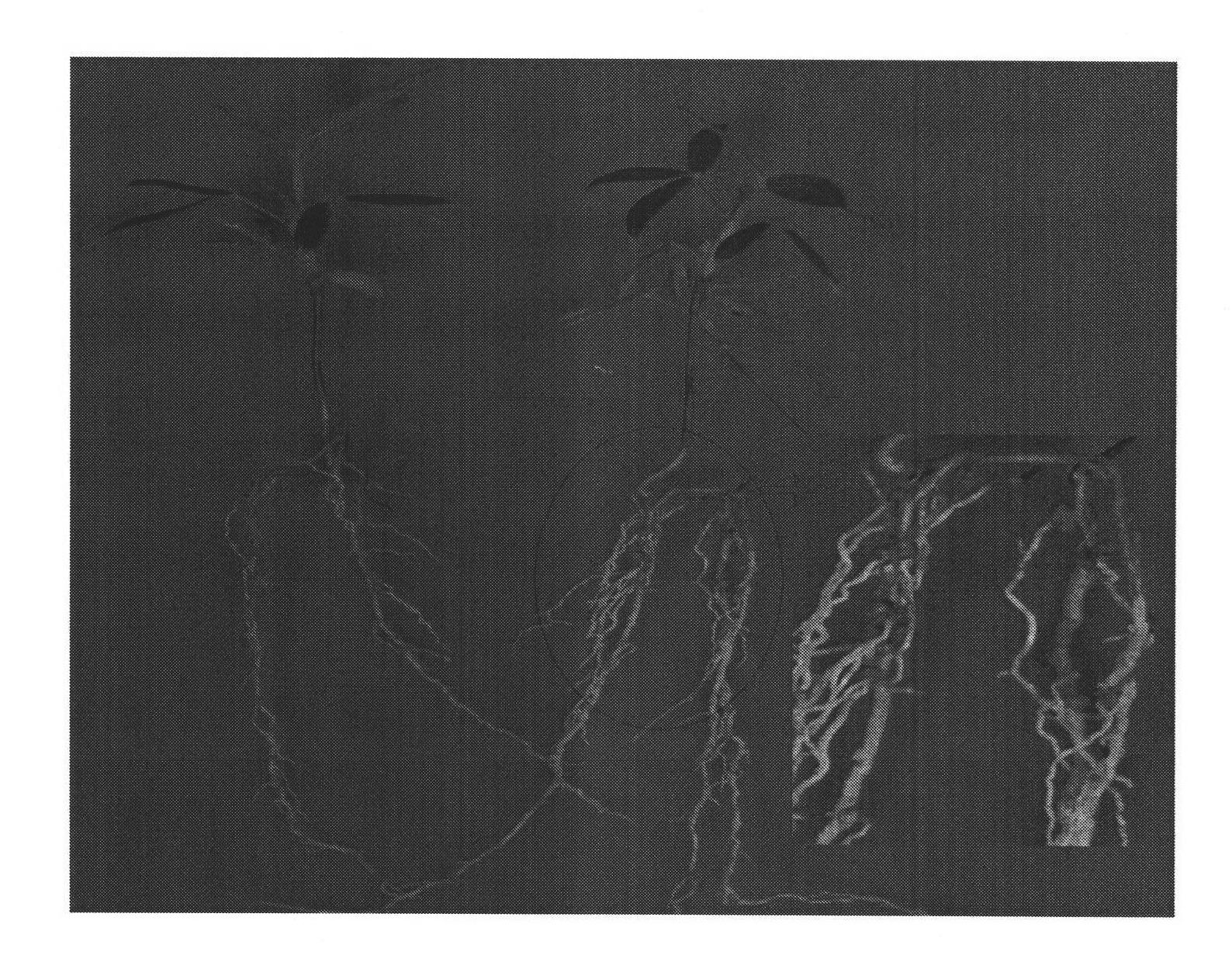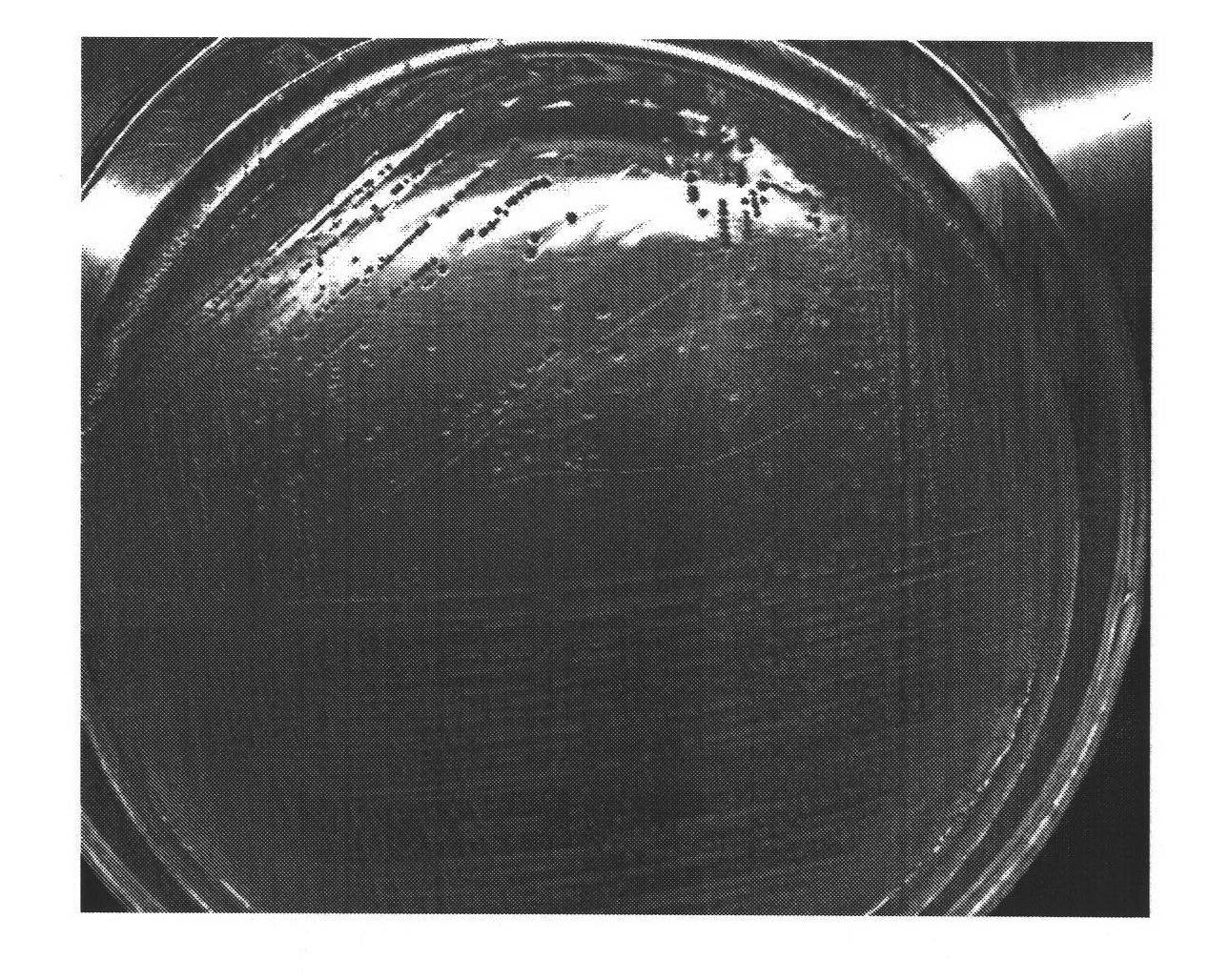Root nodule azotobacter strain RY1 bacterial strain and application thereof
A strain and nitrogen fixation technology, applied in bacteria, organic fertilizers, microorganisms, etc., can solve problems such as failure to achieve high-yield effects
- Summary
- Abstract
- Description
- Claims
- Application Information
AI Technical Summary
Problems solved by technology
Method used
Image
Examples
Embodiment 1
[0029] The acquisition and cultivation of embodiment 1 rhizobia RY1
[0030] On February 27, 2009, the inventor collected a root nodule of a large and luxuriant Stylophyllum in Tianyang farmland wasteland (E10652.483 N23 47.971 H146) in Baise City, Guangxi Province. Put it into a fresh-keeping bag together with the root nodules and store it in an ice pack at low temperature.
[0031] (1) Take out the root system of Stylophyllum from the ice pack and rinse it 2 to 3 times under tap water to clean the root system. Use scissors to cut off the fresh, complete, dark red root nodule with 2mm root, and put it in a petri dish with grade 2 Water rinses the surface clean; this process ensures the integrity of the nodule surface.
[0032] (2) Transfer the rinsed root nodules to a sterilized petri dish, add 95% (volume ratio concentration) alcohol to soak for 3 minutes, pour out the alcohol, rinse 4 to 5 times with sterile water, add 0.1 % (mass volume concentration, 0.1g HgCl 2 / 100ml...
Embodiment 2
[0054] Example 2 The 16S rDNA sequence sequencing of Rhizobium RY1 and the determination of its category
[0055] In order to determine the phylogenetic status of Rhizobium RY1, the 16SDNA series of the isolated strains were sequenced. Firstly, total DNA was extracted using a kit from Omega, and PCR-specific amplification was performed using primers.
[0056] Upstream primer 35fc: CTKAAGAGTTTGATCMTGGCTCAGATTGAAC;
[0057] Downstream primer 1492r: TACGGYTACCTTGTTACGACTT).
[0058] The reaction conditions are as follows:
[0059] PCR reaction
[0060] Primer: 35fc, 1492r
[0061] PCR recipe:
[0062] 10×Reaction Buffer 5.0μL
[0063] dNTPs (10mM) 1.0μL
[0064] P35fc (25Pmol) primer 0.5μL
[0065] P1492r (25Pmol) primer 0.5μL
[0066] Taq DNA polymerase (5u / μL) 1.0μL
[0067] Template DNA 1.0 μL
[0068] Make up to 41 μL with ultrapure water
[0069] PCR procedure
[0070] Pre-denaturation at 94°C: 3min
[0071] Denaturation at 94°C for 50s
[0072] 56℃ annealing ...
Embodiment 3
[0077] Example 3 Application experiment of rhizobia RY1
[0078] In order to confirm the effect of RY1 on Stylophyllum, two main Stylophyllum varieties (TPRC2, TPRC5) were used to reconnect root nodules RY1 to the roots of Stylophyllum by sand culture method, with 4 replicates for each treatment (bacteria, sand and seed For the treatment of seedlings, refer to the backgrafting experiment), and nodule inoculation was used as the control (CK) for backgrafting comparison. The whole process is irrigated with low-nitrogen nutrient solution. See Table 2 and attached Figure 8 . attached Figure 8 The middle left square column (a) is TPRC5, and the right square column (b) is TPRC2 (attached Figure 8 Other square bar graphs in the middle are existing rhizobia control results, which are not directly related to the technology of the present invention, and are not marked).
[0079] It can be seen from Table 2 that the number of nodules, dry weight of nodules, plant height, fresh we...
PUM
 Login to View More
Login to View More Abstract
Description
Claims
Application Information
 Login to View More
Login to View More - R&D
- Intellectual Property
- Life Sciences
- Materials
- Tech Scout
- Unparalleled Data Quality
- Higher Quality Content
- 60% Fewer Hallucinations
Browse by: Latest US Patents, China's latest patents, Technical Efficacy Thesaurus, Application Domain, Technology Topic, Popular Technical Reports.
© 2025 PatSnap. All rights reserved.Legal|Privacy policy|Modern Slavery Act Transparency Statement|Sitemap|About US| Contact US: help@patsnap.com



